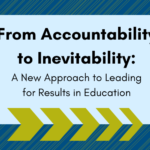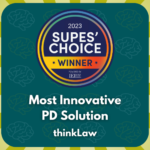How Not to Lose it Over “Learning Loss”: Four Tips for Taking an Equity-Focused Approach to Student Achievement
I just published a piece in Education Post challenging school and district leaders to shift their thinking around learning loss from a deficit-based approach to close the achievement gap to an asset-based approach that allows students to shatter glass ceilings. If you haven’t read this yet, I highly recommend starting there. Without understanding the root causes, we can’t truly wrap our heads around the solution.
Once you’ve completed this exercise in critical thinking, you’ll have a better understanding of how to implement the asset-based, equity-focused approaches below.
Interested In Taking an Equity-Focused
Approach With Your Students?
Click Here To Get A Custom Quote.
So, for a dramatically different “how” that gives your school system permanent pathways to excellence for students, here are four, asset-based, equity-focused approaches to take.
Tip #1: Mandate joy.
Even if drill-and-kill was a reliable pathway to academic success, achievement is not enough. As a father, I can tell you that I will not accept a school for my children that is not allowing them to achieve at a high level academically. However, I also want my children in a school that gives them lots of amazing opportunities to play music, to go on exciting field trips, and pursue passion projects. Yet, so many of the same populations most impacted by learning loss already experienced the least amount of joy in school prior to the pandemic. Why would we have them return to an environment where they would receive even less joy than before?
Mandating joy does not erase the importance of academic achievement. If done right, joy should accelerate achievement. Joy doesn’t mean pizza parties every day and endless free time. Joy looks like classrooms where educators value talking as thinking out loud and use purposeful discussion as a learning accelerant. Joy looks like an engaging test prep activity where students use higher-order metacognition to create common wrong multiple choice answers for an exam so they go beyond mere test-taking skills and learn to think like a test-maker. Joy looks like a classroom where students are not asking “is this going to be on the test?” because learning tasks are purposely designed to unleash their leadership, innovation skills, and ability to not only analyze things as they are, but imagine things as they ought to be.
Tip #2: Be Skeptical of the Big Diagnostic.
I never understood why we plop these long, super dry, multiple-choice assessments in front of our students on the first week of school when students are trying to recall what it means to be in school after months off. And then, school leaders are asked to make serious, “data-driven decisions” based on these assessments.
The problem with data-driven decisions is that the data source is not always reliable, and the decisions made are grossly subjective. With this in mind, why not put much more stock in the data you truly need to answer the following three questions in real-time: (1) what do my students truly need to know right now? (2) how do I know if they know it and (3) if they don’t know it, how can I make sure they know it while still reaching the grade-level learning goals?
So if I’m teaching a fourth grade ELA unit on where the standard is to compare and contrast a firsthand and secondhand account of the same event, what do my students really need to know? In third grade, they were supposed to know how to distinguish one’s own point of view from that of the narrator or the characters. In second grade, they were supposed to know how to acknowledge differences in the points of view of characters. Then, does a fourth grader reading at a second-grade level, really need me to help them understand different points of view? Instead, I’d recognize that, even at a second-grade level, this student has already built an understanding of this fourth-grade standard in the lower grades and build from there.
Tip #3: Accelerate with Curriculum Compacting and Critical Thinking.
Even though some school systems grappling with inequities in their gifted education programs are currently choosing to eliminate them altogether, the learning loss challenge presents several reasons to expand and bolster these programs.
Instead of reserving effective instructional strategies for children labeled as “gifted” based on comparison data, educators would do well to incorporate these practices in their classrooms.
One strategy, acceleration through curriculum compacting, is a perfect asset-based solution to the learning loss challenge. In gifted education, curriculum compacting is often used to accelerate children who achieve at tremendously high levels. This process also involves a much more practical understanding of what students know through a deep knowledge of necessary objectives and prerequisites, strategic use of pretests, and by eliminating or streamlining instructional time for students who already show mastery. Students who are ready to move ahead, move ahead. Throw out those plans for your Summer Learning Loss Academy and start up your Academic Accelerator Programs.
Tip #4: Closing the Critical Thinking Gap.
There has never been a more urgent call to close the critical thinking gap in education. Our current system’s step by step design, where “remember and understand” are at the very bottom and “evaluate and create” are at the very top, leads teachers to often tackle these levels in order. It is unsurprising then that, particularly with students who may be below grade level, teachers will not get to critical thinking because students are stuck on the foundational level. This approach ignores the reality that students can evaluate, synthesize, and start the process of higher-order thinking before having a full understanding of the basics. In fact, a provocative higher-order question can often serve as the hook to motivate students to master the lower-level skills needed to answer a question.
I’ve seen first-hand what happens when we unleash a student’s critical thinking potential. Learning about Antarctica as a second grader hits differently when you need to plan to move your entire school there for a year and use the same skills you learned to overcome food, shelter, and transportation barriers for yourself and people in your community.
This is not the time for tinkering around with closing gaps using the strategies we have always used with little success. Instead of leaning on traditional “remember and understand” models of teaching and learning and looking for ways to eliminate gifted and talented offerings, use this moment to shatter achievement ceilings by expanding the best models and programs to raise the bar for all students. Because making equity real at the classroom level means that every student learns how to lead, innovate, and break what must be broken as a pathway to success in and beyond the classroom.
LIKE WHAT YOU SEE HERE? DIG DEEPER WITH US BY:
>> Connecting With Us On Twitter, Facebook, LinkedIn & Instagram
>> Joining Our Exclusive Facebook™ Group
>> Getting A Copy of Colin Seale’s Best- Selling Book, Thinking Like A Lawyer
>> Bringing Critical Thinking Home With The thinkLaw Family Experience
>> Requesting A Custom Quote For Your Needs








Leave a Reply